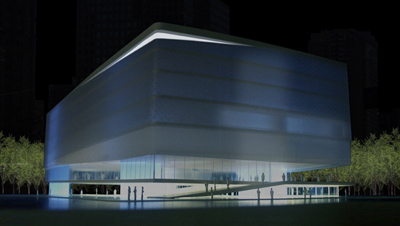Living across operating systems
So I’m travelling this week without my MacBook Pro. Nothing like a little deprivation to make it obvious why it feels so much like deprivation in the first place.
Here’s what I miss most about the Mac (besides OSX itself of course):
- Quicksilver – Amazing app that has changed the way I conceive of files and file access. Makes folders virtual irrevalant and complex functions as easy as typing subject-verb-object. Has to be used to be fully understood.
- BluePhoneElite – Smartly done access to most phone functions, with full integration with your Mac Address Book. You’ll never want to send an SMS from your phone keypad again.
- Universal CMD-Q – ALT-F4 is for people with robotic wrists that swivel on ball bearings, I’ve decided.
- An ical-compatible calendar that actually works well. Sunbird, MozCalendar, Chandler: I’ve left you for good.
- The speakers. As good as I have heard on a laptop ever.
- PackRat – Smooth offline updating and synching with the online Backpack service.
- Not being able to flip the MacBook over to warm my morning coffee on its molten underside.
I do actually miss a few things about XP. Google’s Picasa is really wonderful. Adium is an excellent app, but I do kinda miss Trillian. And lastly, though this will change, Photoshop on Rosetta is pretty painful. It runs a lot faster on XP for now.
E-mail longevity
Today is the tenth anniversary of the establishment of my primary e-mail address . Maybe not such a big deal, but I wonder how many people are using the same address and account after a decade. I don’t mean aliases or forwarding services, I mean the actual account tied to an address. Where would you even find stats on this?
Mindspring, by the way, was a small ISP founded in Atlanta in 1994. It was acquired by Earthlink six years later. I’ve always liked the Athena reference.
Last week’s ignored posts*
Sub-titled: I didn’t intend a treatise on diversity, but here you go.
Today the newest CTA train line, called The Pink Line, begins service, bringing more folks from the west side into the swirling mix of commuters known as The Loop. Chicago is a diverse city of course with hundreds of neighborhoods and ethnicities, but the truth is that the white collar bustle of the Loop doesn’t really convey that sense. Even the L trains offer only a glimpse: tubes of demographic diversity snaking through relatively homogeneous neighborhoods on their way to the business district. The best way to get a sense of the diverse makeup of the city is to visit the beach on a warm summer day. The urban beach is the ultimate public space. It isn’t owned by anyone; it overlaps community boundaries (enforced by the street grid which obviously has no relevance on the beach); it is basically a blank slate with no dilapidated buildings to convey a sense of blight or McMansions to convey the other sense of blight. But most of all, everyone loves the beach. It’s just human. When you’re frolicking in the water it is hard to care about which block someone else is from. I’ve never seen such a harmonious amalgam of nationalities, languages, and habits.
Last week Team USA lost to Ghana in the World Cup. This didn’t occasion much soul-searching among regular Americans beyond the “hey world this is what you’re going to have to do to make us care about this sport” silliness. Luckily I had a unique window into fans who really do care. Our former nanny and many of her friends who’ve babysitted for us are all first-generation Ghanaians. During the match her husband called me a few times. You’d have thought every Ghanaian in the city was in a single room, shouting deliriously. It was infectious. I won’t say I was rooting against my countrymen, but I know I cared a lot less (than not much at all, admittedly) about who won. The better team should always win, of course, but sometimes it just feels right when the team with more devoted fans wins. Onward Black Stars!
We live near Boystown, a section of the Lakeview neighborhood that today hosts the flamboyant Gay Pride Parade (and will be ground zero for the Gay Games that come to Chicago in a few weeks). Boystown is festooned with rainbow flags of course so as we were driving through (home from the beach in fact) my four-year-old son asked my wife and I what the the flags meant. We stammered a bit, started to explain, rewound, then just sat there thinking of all the ways this conversation could spiral out of control. Finally I said “The flag means that in this part of town there are no rules on who you can love.” As soon as I said it I realized the fatal flaw in the line. If he asked me what the rules were we’d have a thornier conversation on our hands. He didn’t ask, thankfully. It was the best I could do no the spur of the moment. Ah parenting.
[*] Cleverly sprinkled with references to today’s events to seem more timely.
Mashedness
The concept of the mashup is all the rage these days. The mixability of online apps and services to create something fundamentally new is in part what makes Web 2.0 so appealing. (Here’s a great matrix of web apps and how’s they’ve been mixed with others.) Plotting crime stats on your neighborhood map (Chicagocrime.org), finding out what music acts are upcoming based on your recently played song list (Upcomingscrobbler), viewing photos relavent to your current location (WhereAmI.At?) — all are yokings-together of discrete applications to create something brand new.
The mashup as a musical genre is similarly in vogue right now, maybe more so. If the classic remix is a song dressed up in a new clothes then the musical mashup is a conjoined twin strutting around in a single, seamless overcoat. Mashes from artists like 2 Many DJ’s, DJ Z-Trip, DJ BC, The Kleptones, and Mike Relm demonstrate that when two or more songs are woven together the result is usually more than a bunch of shared downbeats. For example, where DJ’s have traditionally relied on beat matching to pair songs, often mashups choose source material based on thematic similarity. The songs in the mash are like conversants in a dialogue, talking about the same thing. Soulwax does this superbly. Of course, the beats have to match too, but that’s a lot harder to do when you also have to match what they are about.
Both forms of mashing are of course technology-driven. Web app mashups owe their existence to open API’s and standards while musical mashes have proliferated because of the ease of use and ubiquity of digital editing software (and standard audio file formats).
Recently I was listening to an 80’s format streaming radio station and a Beatles medley came on. This isn’t the 80’s, I thought, until I realized that this was one of the early 80’s products of Stars on 45, the pop act that recreated popular music set to a unifying beat. I loved this when I was younger. Stars on 45 created medleys of the BeeGees, famous TV tunes, Motown, and other generic categories. By today’s mashup standards it seems amazingly simple, but what I didn’t know is that Stars on 45 hired sound-alike studio musicians to carefully recreate the original songs — no sample restrictions there, though in truth they were ripping off much more of the originals than today’s quick-sample artists do, but I digress.
Instead of integrating the actual recordings to create something new, Stars on 45 recreated the originals with total faithfulness, a move which gave them the flexibility that today’s technology does. In a way it reminds me of early legacy technology integration projects with all manner of cryptic conversion and middleware transmogrification of data just to get a few apps to talk to each other. The end-user might not know the path the data took to get to him, but to someone who could peer under the hood the process was needlessly byzantine.
And this is where my powers of analogy exhaust themselves.
The Forbidden City: Beyond Space and Time
Yesterday in Beijing, China’s Palace Museum and IBM jointly announced The Forbidden City: Beyond Space and Time, the project that I’ve been working on for over a year. Consistent readers of this blog (yes, you three) know that I spend a lot of time in China and so it is a great relief that the cat is officially out of the bag. Not that I’ll be diving into excruciating detail in future posts — gotta save some surprises for the actual launch in 2008, right? — but it should give a bit more context to my musings.
So, what’s the project? Well there’s the official press release and the Palace Museum’s statement (in Chinese). The Chicago Sun-Times decided to take the local angle on the announcement and ran a flattering piece on me and my team. The paper even gave Ascent Stage some love.
But what is Beyond Space and Time? Well, announcements like this at the beginning of a project are always tricky since it is the nature of multi-year, first-of-a-kind efforts to change drastically from vision to implementation. But you have to start somewhere, so here’s the vision.
The heart of Beyond Space and Time is a virtual online replica of the Forbidden City. This is not a set of traditional webpages but rather a fully immersive, spatial, populated world that corresponds architecturally and historically to the vast grounds of the current Palace Museum. And not just pretty building models to ogle at. We call it a Participatory Cultural Environment to stress the importance of a space alive with people — other visitors who you can interact with and, if possible, computer-controlled representations of historic persons. Though 3D representation is widespread in the field of cultural heritage (primarily for preservation), this kind of multi-user, education-focused cultural worlds does not exist.
If you know Second Life, you’re familiar with non-game-based 3D virtual communities. Second Life is an inspiration and even a development sandbox for us (no SLURL, we’re on a private island for now — but we did recently take a SL team portait), but we’re evaluating many platform possibilities. It is sometimes said that people who visit the real Forbidden City leave thinking that they’ve missed the actual Palace Museum. In fact, the buildings and grounds (and of course the artifacts therein) are the Palace Museum; it is not a single building with nice glass cases and wall placards. This is the primary reason that our virtual version is a spatial world rather than a more traditional web front end (however tricked out) for a database of media, as we did with the Hermitage and Eternal Egypt. The museum is a city and the best way to experience a city is by moving through it and interacting with others in it. Call it the sidewalk approach to cultural heritage.
There’s an historical aspect too: that’s the beyond time part. We envision being able to move between a few discrete historical moments in the centuries-long evolution of the city. The environment will morph architecturally and of course the storylines embedded in the world will correspond to the historical moment. System design verges on science fiction here as we move through the implications of a community space that exists on different timelines. For example what happens to the field trip group when some of your classmates decide to peel off for the 16th century?
Of course, a virtual simulacrum of a physical space isn’t much fun if it doesn’t have points of tangency with the real world, now is it? We’re working with our museum partners to identify places inside the Forbidden City where visitors who are physically there can interact with the virtual version of the space. We’re evaluating different location-based services — from projection in the palace halls to mobile device interaction. The idea is to break down the strict distinction between the real world and the virtual world, to let one enhance the other. Challenges like this are one of the many reasons IBM undertakes and funds projects such as Beyond Space and Time.
There’s an aspect to the project that is personally very exciting and not yet reported in the press. Modelling 800 buildings to a level of appropriate detail isn’t something that can realistically be achieved by 2008. We realize this and actually think it is a blessing in disguise. Inspired by the Ancient Spaces project which itself takes a Wikipedia-like approach to collaborative content development, we propose to open the modelling effort to the global community of developers. When exactly this will happen and certainly how it will work is still to be defined, but if you are interested in being part of the distributed virtual construction crew drop me a line at .
In North America I am working with some very talented designers and developers, many of whom have years of experience from earlier museum projects. In China we're working with specialists from IBM's research lab in Beijing as well as a team at the Palace Museum who are as technically-savvy as they are informed about the history and culture inside the Forbidden City walls.
So, then, back to work.
[Note to those of you who read this site's feeds: I've played with a kind of spatial hyperlink that adds some extra information to this post. The content, alas, is not part of the RSS feeds. Drop on by the site if you'd like the extra morsels.]
UPDATE: The virtual world is live and can be found at www.beyondspaceandtime.org.
How to create a LEGO mosaic
UPDATE: the kids have created a business based on this idea. If you’re interested in having a mosaic made from your photo, please visit www.thebrickbrothers.com.
When my oldest son was born in 2001 LEGO offered a cool online “Brick-o-lizer” that would take an uploaded photo and turn it into a five-tone grayscale grid of 1×1 bricks from which you could create a wall-hanging mosaic. LEGO would send you the exact right amount of bricks in bulk. Putting it together was as easy as paint-by-numbers. I did this for him and for his little brother in 2003.
My daughter was born a few weeks ago and so naturally I went back to the Brick-o-lizer to create her mosaic. Imagine my horror to find out that it isn’t available anymore. How could I deprive my baby girl of her LEGO mosaic? Well. Obviously. I couldn’t.
So, here follows instructions for doing it manually in Photoshop. (But before we begin, let’s be sure to acknowledge the unbelievably talented people who create LEGO mosaics in full color without a grid at all. I bow to your supremacy.)

First, prep your shot as a square. For portraits, tight in is best. People will naturally view your mosaic from a distance or squinting to maximize contrast so details external to the person in the portrait will be lost (and a benefit-free pain in the ass to snap into the LEGO grid for you).


Change the photo to Indexed Color, select a Custom palette, and choose six shades of gray. The easiest way is to click on the grid and then when the color palette comes up choose Web colors only. Select white, black, and then a light, medium, and dark gray.

In Preferences > Guides, Grids, & Slices set the Grid to a prominent color, gridline every 10 pixels, and subdivisions 1. Turn on a grid with View > Show > Grid.
You’ll need to do some manual computation. The grid is 44 x 44 which is 1,936 bricks. Eyeball or, if you prefer, count as many of each of the five colors you will need.
You’ll then need to go to the LEGO shop and order the bricks.
You’ll need one X-Large Gray Baseplate , one set of 2×4 Roof Tiles Steep Sloped Black, one set of Black Roof Tiles 25° (2×2, 2×4, Corner), and then as many 1×1 Studs in White, Light Grey, Medium Grey, Dark Grey, and Black as you need.
Once it all arrives, use your gridded Photoshop image or print it out and enjoy a few hours of mind-numbing bricklaying.

Back in the saddle
And I’m already sore. Thanks to everyone who wrote with congrats on the newest little bundle. Charlotte and Mama are doing wonderfully. Her brothers regard her with love, curiosity, but mostly indifference. I mean, she’s not exactly stealing their toys yet — or even awake much — so she’s been deemed low-threat.
The other new delivery is one that plugs in. I’ve been playing around with a 17″ MacBook Pro for a few weeks now. It is a superb machine. Running a G5 at home and having moved most of my critical applications (mail, calendar, to do lists, etc) to online/synch services allowed for a pretty smooth transition. Still, working for IBM on a Mac can be a challenge. Though there are some great resources internally for doing so (and a healthy IBM Linux community that will help you run Anything But MS) some things still require Windows. Which is why running XP in Parallels virtual machine is such a blessing.
Some thoughts.
- There is no solution for in-flight (or in-car) powering of the MacBook Pro. This isn’t a problem unique to Apple but rather to newer laptops that run at 85W. Airplane power connectors shut off when anything tries to draw more than 75W. Inverters seem not to work. Since airlines are likely not to retrofit their fleets, what’s needed is a way to reduce the wattage pull via software on the machine. This is a serious problem for international travel.
- As yet there are virtually no cards available for the Express/34 slot. Obviously PC cards don’t work (which limits the usefulness of running XP a bit), but the real problem is the lack of cellular wireless cards, 2.5G or 3G. Also a big issue for a frequent traveller.
- Right-click. I use it, I need it, I quite love it. Yes, you can plop two fingers on the trackpad and click for a right-click, but that’s cumbersome. All Apple would have to do is elegantly split the long mouse button. But I doubt that’ll happen.
- The trackpad is nice, sure. But I miss the keyboard trackpoint. It is easier to use on cramped airplanes and it allows you never to remove your fingers from typing orientation. Sigh.
- No dedicated reverse (which is to say forward) delete button. You can do this with Fn-Delete, but I never realized how much I delete going forward until now.
- There’s no IBM VPN client for Intel-based Macs, yet. The company that makes the IBM VPN for PPC Macs is working on it, but right now this means I have to proxy all IBM-bound networking through Parallels and the XP VPN client. A cool solution, but let’s face it: a pain in the ass.
Most of these are travel-related gripes, which begs the question. With three kids at home now, maybe I shouldn’t be travelling so damn much?
Such great heights
OK, so, we didn’t expect that to happen.
Today Planet Earth and two flabbergasted parents welcomed Charlotte Mae Tolva, a beautiful, healthy 7lb. baby girl. Robyn and I are still in a bit of shock. We felt nearly certain that this baby was a boy and that he’d join his brothers in a lifetime of mayhem and dastardliness. But no. Baby Charlotte skipped our anniversary last week in favor of a different holiday. She arrived just in time for most retail shops to be closed for the Memorial Day observance and so prevented us (or rather our families) from buying anything remotely girl-like that we can bring the little darling home in. You see, we own only boy-gear (most of it threadbare) and didn’t even bring a “safety” outfit to the hospital. But maybe closed baby shops is a good thing. I fear a crazed orgy of girl-stuff purchasing from relatives and friends.
Oh, and I suspect The Darnedest Things blog category is going to start filling up rapidly once we introduce the big bad brothers to Charlotte this evening. Check back for their trenchant insights into boy-girl relations and anatomical differences.
Welcome, sweet little baby. You’re the best kind of surprise.
Decade
You may be wondering if the baby has come yet or not. The answer is no and the reason is obvious. Vito the Fetus (the in uteronym) is waiting to come later today. In fact, it is waiting just long enough for us to shove the kids off to their grandparents for the long weekend and to settle down to celebrate our 10th wedding anniversary in some semblance of peace. Yes, today marks one decade since my girlfriend Robyn had the striking lapse in reason of saying “I do” when posed the fateful question. So now, as we wait for the birth of our child and the next “happiest day of our lives” I’m reminded of that first happiest day ten years ago. I thought I knew then how lucky I was, but of course that’s silly. Only looking back on what a special woman, amazing wife, and devoted mother Robyn has become can I even begin to compute the staggering odds against me finding someone so perfect.
For the rehearsal dinner ten years and one day ago I created a video of photos, music, and hilariously terrible on-screen graphics using two VHS decks and a 75MHz Gateway PC. We watched it again today. For one, it was way too long. I don’t know what the hell the audience was thinking while I stood up there and narrated, but each of the photos was on-screen for like 10 seconds. Interminable. Get this clown off the stage. But the really funny thing is that in the course of dubbing the tapes I screwed up somehow and spliced in a Home Shopping Network channel audio feed. This wasn’t heard at the dinner because my audio tape was separate from the video (high tech synching involved me signalling to my brother to press play on the deck across the room — I’m so ashamed), but watching it again with the HSN audio was truly surreal. Basically HSN 1996 sounds different in no way from HSN 2006. Still hawking the same crap with the same plastic enthusiasm. The dubbed video was a crazy blend (dare I say mashup) of nostalgia and hucksterism.
That last line may have seemed like an ironic comment on marriage, but no. Now if you will excuse me, we have to prepare for Vito who would like nothing more than to share a birthday with our anniversary.
Ground Zero bickering stops for a moment to Think Different
The International Freedom Center, a cultural hub designed to commemorate 9/11 by promoting America’s most important value at the site of its worst foreign attack, was shelved last year when the governor got cold feet because victims’ families wanted the entirety of Ground Zero turned into a somber memorial to the dead.
911Memorials.org, a grass-roots watchdog site that helped expel the Freedom Center, has been tracking developments at Ground Zero. Today they asked “Can a glass box save Ground Zero?” (a reference to the new Apple Store design on 5th Ave).
Well, in any event Apple opened a nifty store at GM [General Motors]. LMDC in creating the below level plaza design cited the GM building plaza. That plaza was a dreay failure. Amazing what a glass box did for improving it. A glass box would sure address a lot of problems they have now.
Um, hello? Was no one awake last year? Snøhetta’s design for the Freedom Center — now the design for the ambiguous Cultural Center and possibly for the Memorial museum itself — is exactly that. The majority of 9/11 artifacts was to be housed underground with at least one above-ground entry via the glass box that was the cultural center. How is it that the Apple design is now a unique inspiration? And isn’t Snøhetta still contracted for some construction at Ground Zero? I’d like to know what problems the glass box/mostly underground design will solve this year that it would not have solved last year?














